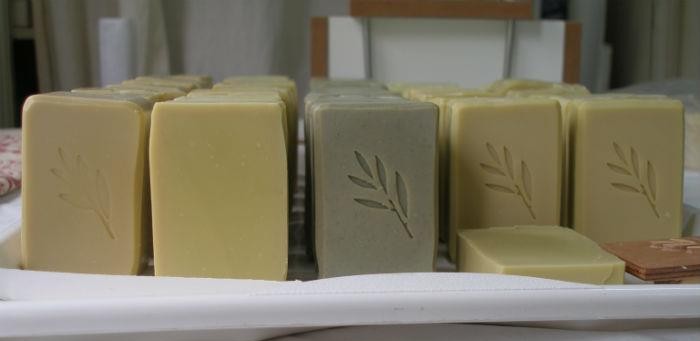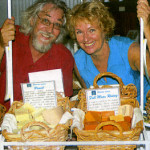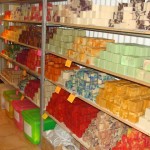Alison’s interview continues from Part 1: Pioneering handmade soapmaking in tropical Western Australia
5. Can you remember and would you describe your “perfect” batch and/or your “monster” batch?
The monster batch is easy. There were two. The first was very early, perhaps my second or third, which totally separated into 2 layers. But it taught me the fundamental importance of waiting for the “trace”, however long this took. And some batches of vegetable soap could take me all day to trace! My it was a relief to discover the stick blender, via The Sage, and see that this did NOT ruin the soap, it simply broke the molecules up so they could saponify more quickly.
The second monster batch was really about preparing the lye. Broome can get VERY hot, and the water coming through the taps is hot too. So one day I added my sodium hydroxide to this warmish water and got a volcano! Luckily I heard it coming and jumped out of the way. But it reached perhaps 3 metres high, and the stains on the walls and window remained for years. This gave me the greatest respect for NaOH!
My favourite “perfect” is when the Pearl soap comes out really well, completely homogenous, smooth textured, soft smelling, luxurious. I like the way that adding an emulsion to this soap seems to change its texture. Or when the marbles are so beautiful they are like abstract paintings, or aerial landscapes.
“I salute the courage I see everywhere as people wake up and choose positive directions.”
6. Now would you tell us about your favourites: Which is your favourite soap and why? What soapmaking method do you use most and why? Which are your favourite ingredients and where do you buy them?
We are cold process soapmakers and always have been. We couldn’t be bothered with a 2 stage method, or with cooking. The down side is that we must use large quantities of essential oils. Most of our soaps have a similar basic recipe of olive, coconut, sustainable palm & castor oils. What we love to do is get the soap right, and then create works of art in colour and aroma. We are purists about aroma – using 95% pure essential oils and just a very few good quality synthetics – sandalwood & vanilla. But we use a lot of colour (cosmetic grade of course), since the Kimberley is so amazingly colourful and we want to express this. And we have gotten even more colourful over the years. Having said this, several soaps have other additives – mango or shea butter, macadamia and rice bran oils, coconut cream, salt, coffee, calendula, goatsmilk powder etc. etc. And we have recently made palm free soap as the market seems to be pushing for this, given the orang utan habitat crisis. I always use MMS for a soap calculator.
Favourites? Love that WA virgin olive oil, so much nicer than the old Spanish stuff which was all I could buy in the beginning. And I love to use macadamia oil at 5-10% – from Proteco in Queensland. Shea butter is nice too. My latest favourite soap is the palm free Pearl Maxima, which is probably the soap I’d take to a desert island. But you know, my favourites vary according to how I feel. Last week I was so loving the new aroma in the Wild & Free Kimberley, with its Eucalyptus Staigeriana (lemon scented ironbark) and its honey myrtle and ginger and spikenard, and its gorgeous strong Kimberley colours.
7. Are there any people, who have given you inspiration along the years?
There weren’t many – we were SO isolated! Marina Tadiello helped confirm me – she too believed in purity, in being as natural as possible, and confirmed my values – she gave back so much by supporting new soapmakers by answering their questions in her soapnaturally.org website. The Ballingup shop of Tinderbox (cheekyherbs) was inspiring for our own shop. Corynne’s soap was the only other business I knew in the beginning, based in those days at the Fremantle Markets. Kathy Miller and the Majestic Mountain Sage were both informative. The biggest inspiration has been the Kimberley landscape and the people around me, all of which I love dearly.
8. What is the Number One suggestion you would give to a new soaper?
Read, learn, decide which method suits you, and then Just do it, as per Nike. I think you learn on the job. Then modify and experiment till it gets to be your unique soap. If you are a Soapyqueen you will soon find out. When people ask me what’s the secret to good soap, I say – 2 things, good mathematics, and Love.
“There’s a groping to find a bigger self […] A new focus on the heart, and putting the mind in the service of the heart, marrying them as partners in new ways.”
9. Which Websites about soap (if any) would you recommend as being asbsolutely worth visiting?
http://www.millersoap.com/ , https://www.thesage.com/ (I always use to calculate new soaps)
Alison’s interview continues with Part 3: Soapmaking as a business to promote positive change



